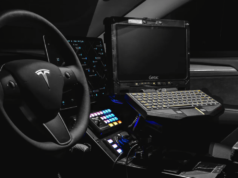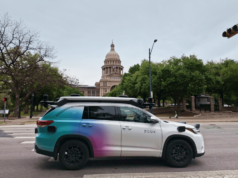The race to rule the autonomous car market is on. Google, Ford and now Uber have stepped up to the challenge, each with their own vision and ambitions as to what a driverless world will look like.
What’s clear is that technology is playing an ever-increasing role — where cities and existing modes of transit have stumbled — allowing us to completely rethink the mobility landscape.
In the 20th century, the car was king. Henry Ford’s vision that every individual would own their own vehicle and travel as they pleased has certainly come true, but along with it has come congested roads, air pollution and safety concerns.
This century, we will see those trends reverse. Cars will be viewed less as a singular source of personal transportation and more as a piece of the evolving transit ecosystem. On-demand access to more than one mode of transportation has become the new norm. “By addressing the first-and-last mile issue related to public transit access, new mobility solutions can potentially contribute to bridging gaps in existing transportation networks and encouraging multimodality,” indicates the Center for Automotive Research in their latest report.
Three trends will be important to watch as advancement of the autonomous vehicle speeds up.
Rethinking our relationship with the automobile
Our relationship with the automobile is already changing. Surveys have shown younger generations are less likely to own a car, and monthly sales data shows that new car sales are slowing. While this data suggests the end of car ownership as we know it is near, a report from the American Public Transportation Association says that Americans are simply taking a more “car-lite” approach, instead of eschewing the auto completely.
New modes of transportation may fill the current gaps in the transit ecosystem.
The report also shows that the latest mobility solutions, such as car-sharing services like Zipcar and ride-hailing like Uber and Lyft, are actually helping existing public transportation. The report goes on to say: “The research conducted for this study suggests that, instead of competing for the same riders, public transit and ridesourcing complement one another by serving different trip types.”
The missing link in “shared” mobility
New modes of transportation may fill the current gaps in the transit ecosystem, but much of the mobility landscape often still operates in isolation. This won’t be the case for long. As we’ve recently seen with GM investing in Lyft, Didi buying Uber China and Uber teaming up with Volvo in Pittsburgh, the further mixing of automakers, tech disruptors and cities will continue as consumer behaviors and demands shape the transport ecosystem. We’ve even seen this shift in the car-rental market with Enterprise recently repositioning to appeal to a broader demographic.
Above all, what will rule is the aggregation of multiple sources of mobility, with an aim to ensure accessibility to all — connected mobility.
Information superhighways form — literally
A crucial element to connecting all the various mobility solutions is the collection, monitoring and use of data to improve the overall user experience. For example, Didi is analyzing its data in China to identify problem areas and predict when more cars are needed on the road.
Analyzing this data is the key to unlocking the true potential of changing mobility habits, which lies in deep analysis of user data. How communities and citizens participate, whether via crowdsourcing or behaviors, will become part of another layer of the evolution.
We’ve only just scratched the surface of mobility’s potential. The following data point, shared at the recent Intel Developer Forum by Intel CEO Brian Krzanich shows that there is much more to come:
“The average autonomous vehicle, by 2020, will produce 4,000 gigabytes per day,” he said in his keynote. He prefaced it by saying that the average person generates about “6-to-700 megabits a day. By 2020, the estimate is 1.5 gigabytes a day for the average person.”
Featured Image: gst/Shutterstock






